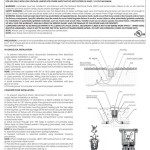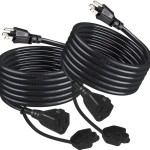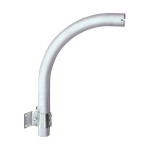Wiring Outdoor Lighting: A Comprehensive Guide
Outdoor lighting transforms your outdoor spaces, creating a welcoming atmosphere and enhancing safety. Wiring outdoor lighting requires careful planning and precise execution. This guide provides a comprehensive overview of the essential aspects of wiring outdoor lighting, empowering you with the knowledge to illuminate your outdoor surroundings skillfully and safely.
1. Planning and Design
Begin by outlining your lighting design, considering the purpose and ambiance you wish to create. Determine the locations of fixtures, wiring routes, and power sources. Sketch a detailed plan, including measurements and wire gauges, to ensure efficient installation.
2. Choosing the Right Wire
Select electrical wire specifically designed for outdoor use. It should be weather-resistant, UV-resistant, and moisture-resistant to withstand harsh weather conditions. Common types include UF (Underground Feeder) and THWN (Thermoplastic High Heat-Resistant Nylon) cables.
3. Power Source and Circuit
Determine the appropriate power source for your outdoor lighting system. This could be a dedicated circuit from your electrical panel or an existing outdoor outlet. Ensure the circuit has sufficient capacity for the lighting load and consider adding a Ground Fault Circuit Interrupter (GFCI) for safety.
4. Wiring Techniques
Use proper wiring techniques to ensure a safe and durable installation. Strip wire ends cleanly and connect them securely using appropriate connectors or junction boxes. Protect wire connections from moisture and UV rays by using weatherproof covers or sealant.
5. Underground Wiring
When running wires underground, dig trenches deep enough to protect the wires from damage. Use underground conduit or direct burial wire for additional protection and bury the wires at least 12 inches below the surface.
6. Fixtures and Installation
Select outdoor lighting fixtures that are compatible with your wiring system and designed for the intended location. Follow the manufacturer's instructions for installation, ensuring proper mounting and securing of fixtures.
7. Testing and Safety
Once the wiring is complete, thoroughly test the system for proper function and safety. Check for continuity, ground faults, and proper voltage. Ensure all electrical connections are secure and weatherproof.
8. Maintenance and Troubleshooting
Regular maintenance is crucial to maintain the performance and safety of your outdoor lighting system. Inspect wires and fixtures periodically for any damage or loose connections. Promptly address any issues to prevent potential hazards.
Wiring outdoor lighting requires a combination of planning, appropriate materials, and meticulous execution. By following these essential aspects, you can confidently illuminate your outdoor spaces, enhancing their beauty and safety while enjoying peace of mind knowing your system is wired to the highest standards.

Wiring Installation Coastal Source

Outdoor Low Voltage Lighting Diy Family Handyman

Installation Help For Outdoor Lighting

How To Install Low Voltage Outdoor Landscape Lighting The Garden Glove

How To Install Low Voltage Outdoor Landscape Lighting The Garden Glove

How To Install A Yard Light Post Electrical Projects Home Wiring Lights

How To Install Outdoor Lighting And Solar Lights Garden

The Easiest Way To Install Low Voltage Landscape Lighting Abby Organizes

How To Wire Outdoor Low Voltage Lighting Part 2

How To Install Low Voltage Outdoor Deck Lighting
Related Posts







